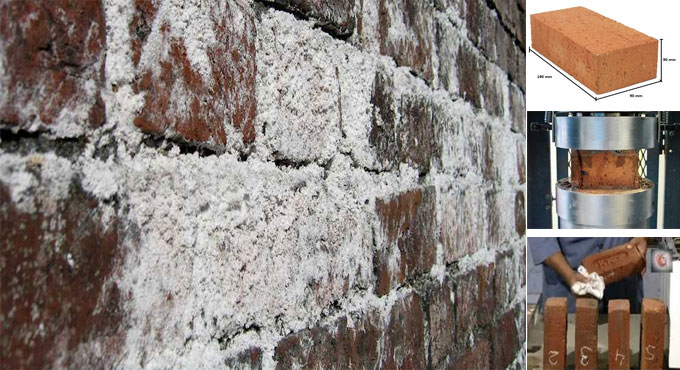
Various tests on bricks
Brick is considered as one of the most useful construction materials in building. The brick comprises of clay with a significant amount of silica and alumina and little amounts of lime, iron, manganese, sulphur, etc.
The clay bricks are found in piers, footings, masonry construction, that is exterior wall, interior wall, partition wall, and over load-bearing structures. Bricks are employed for structural, i.e. load bearing or non-structural, i.e. partition walls purposes.
To check the quality of brick, the following points should be taken considered :-
? Shape
? Size
? Colour
? Frog
? Water absorption
? Effloresce
? Compressive strength of Brick
Various Tests on Brick in the job site:
Various tests on bricks provide the detail information on the elementary quality depending on its shape, size and colour at first sight. Give below, some of the most recognized fields tests on brick:
? Shape and Size of Clay Bricks: The clay bricks should include a consistent rectangular plan surface, according to standard size and sharp straight edges. With adherence to BSI, the standard size of brick should be 190 mm x 90 mm x 90 mm and constructional size should be 200 mm x 100 mm x 100 mm.
? A hardness of Clay Bricks: The clay bricks should be satisfactorily solid so that the surface of the brick remains unaffected when scratched with a finger-nail.
? Colour of Clay Bricks: The clay bricks should contain a consistent deep red colour on the whole. It denotes the constancy of chemical composition and the quality of burning of the bricks.
? Texture and condensation of Clay Bricks: Check the smoothness of the surfaces so that skidding of mortar is not occurred. The clay brick should comprise of a pre-compact and uniform texture. A broken surface should not contain cracks, holes grits or lumps of lime.
? Soundness of Clay Bricks: When two clay bricks are struck out together, a metallic ringing sound should be produced.
? Thermal Conductivity of Clay Bricks: The thermal conductivity of clay bricks is not tested since the thermal conductivity of clay brick is poor and consequently it safeguards from heat.
? Elementary Strength of Clay Bricks: When the clay bricks are dropped flat on the solid ground from a height of about one meter, they should not be broken.
Brick Efflorescence of ClayBricks: Existence of liquefied salt in the bricks is harmful because a grey or white powder layer is formed on the brick surface with the consumption of moisture. To detect the clay bricks efflorescence, bricks are submerged in water for 24 hours then kept dry in the shade. If any white colour stores on the surface of the brick then the quality of the brick is poor for construction purpose.
To learn the details about the laboratory tests on brick, go through the following link gharpedia.com


